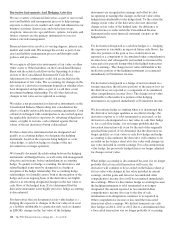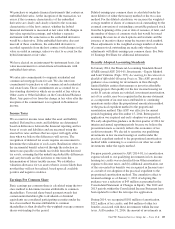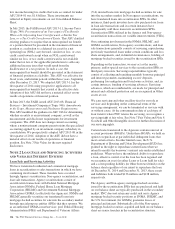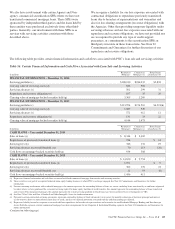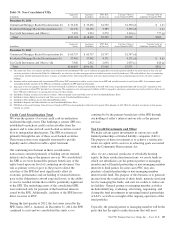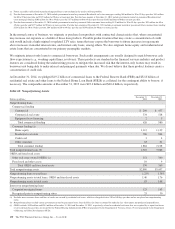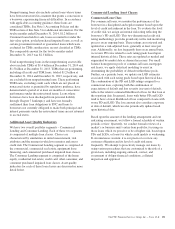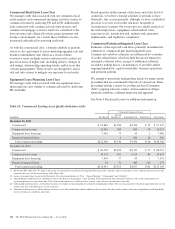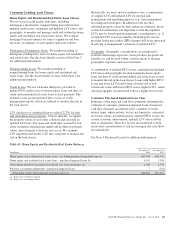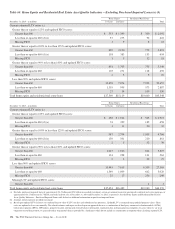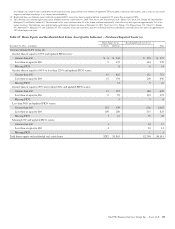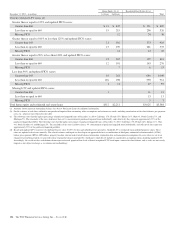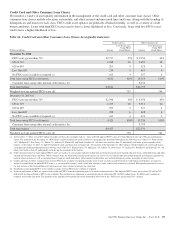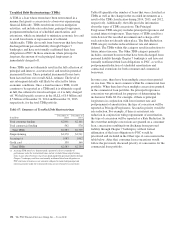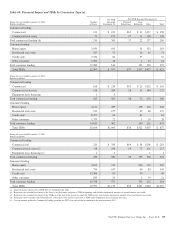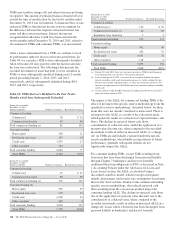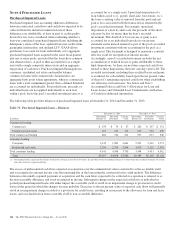PNC Bank 2014 Annual Report Download - page 150
Download and view the complete annual report
Please find page 150 of the 2014 PNC Bank annual report below. You can navigate through the pages in the report by either clicking on the pages listed below, or by using the keyword search tool below to find specific information within the annual report.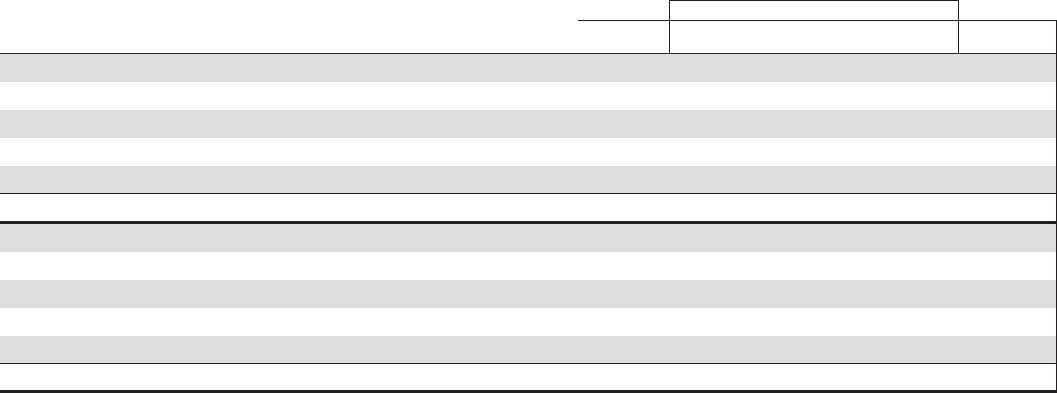
Commercial Real Estate Loan Class
We manage credit risk associated with our commercial real
estate projects and commercial mortgage activities similar to
commercial loans by analyzing PD and LGD. Additionally,
risks connected with commercial real estate projects and
commercial mortgage activities tend to be correlated to the
loan structure and collateral location, project progress and
business environment. As a result, these attributes are also
monitored and utilized in assessing credit risk.
As with the commercial class, a formal schedule of periodic
review is also performed to assess market/geographic risk and
business unit/industry risk. Often as a result of these
overviews, more in-depth reviews and increased scrutiny are
placed on areas of higher risk, including adverse changes in
risk ratings, deteriorating operating trends, and/or areas that
concern management. These reviews are designed to assess
risk and take actions to mitigate our exposure to such risks.
Equipment Lease Financing Loan Class
We manage credit risk associated with our equipment lease
financing loan class similar to commercial loans by analyzing
PD and LGD.
Based upon the dollar amount of the lease and of the level of
credit risk, we follow a formal schedule of periodic review.
Generally, this occurs quarterly, although we have established
practices to review such credit risk more frequently if
circumstances warrant. Our review process entails analysis of
the following factors: equipment value/residual value,
exposure levels, jurisdiction risk, industry risk, guarantor
requirements, and regulatory compliance.
Commercial Purchased Impaired Loan Class
Estimates of the expected cash flows primarily determine the
valuation of commercial purchased impaired loans.
Commercial cash flow estimates are influenced by a number
of credit related items, which include but are not limited to:
estimated collateral value, receipt of additional collateral,
secondary trading prices, circumstances of possible and/or
ongoing liquidation, capital availability, business operations
and payment patterns.
We attempt to proactively manage these factors by using various
procedures that are customized to the risk of a given loan. These
procedures include a review by our Special Asset Committee
(SAC), ongoing outreach, contact, and assessment of obligor
financial conditions, collateral inspection and appraisal.
See Note 4 Purchased Loans for additional information.
Table 62: Commercial Lending Asset Quality Indicators (a)(b)
Criticized Commercial Loans
In millions Pass Rated
Special
Mention (c) Substandard (d) Doubtful (e) Total Loans
December 31, 2014
Commercial $ 92,884 $1,984 $2,424 $ 55 $ 97,347
Commercial real estate 22,066 285 639 35 23,025
Equipment lease financing 7,518 73 93 2 7,686
Purchased impaired loans 4 280 26 310
Total commercial lending $122,468 $2,346 $3,436 $118 $128,368
December 31, 2013
Commercial $ 83,903 $1,894 $2,352 $ 72 $ 88,221
Commercial real estate 19,175 301 1,113 86 20,675
Equipment lease financing 7,403 77 93 3 7,576
Purchased impaired loans 10 31 469 163 673
Total commercial lending $110,491 $2,303 $4,027 $324 $117,145
(a) Based upon PDs and LGDs. We apply a split rating classification to certain loans meeting threshold criteria. By assigning a split classification, a loan’s exposure amount may be split
into more than one classification category in the above table.
(b) Loans are included above based on the Regulatory Classification definitions of “Pass”, “Special Mention”, “Substandard” and “Doubtful”.
(c) Special Mention rated loans have a potential weakness that deserves management’s close attention. If left uncorrected, these potential weaknesses may result in deterioration of
repayment prospects at some future date. These loans do not expose us to sufficient risk to warrant a more adverse classification at this time.
(d) Substandard rated loans have a well-defined weakness or weaknesses that jeopardize the collection or liquidation of debt. They are characterized by the distinct possibility that we will
sustain some loss if the deficiencies are not corrected.
(e) Doubtful rated loans possess all the inherent weaknesses of a Substandard loan with the additional characteristics that the weakness makes collection or liquidation in full improbable
due to existing facts, conditions, and values.
132 The PNC Financial Services Group, Inc. – Form 10-K


